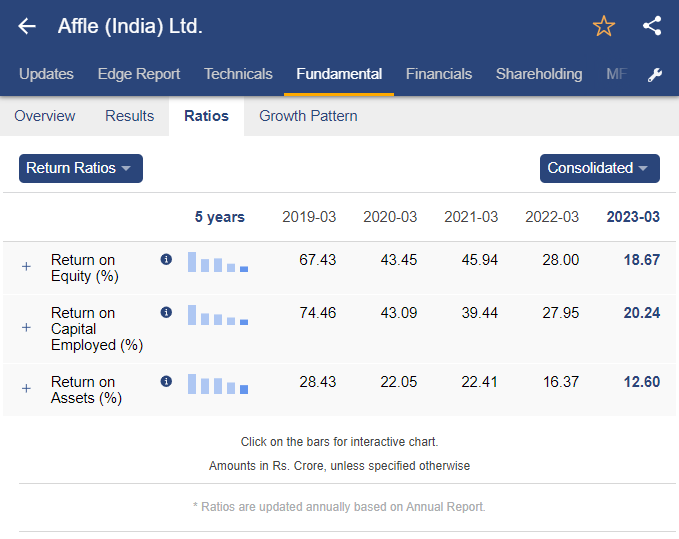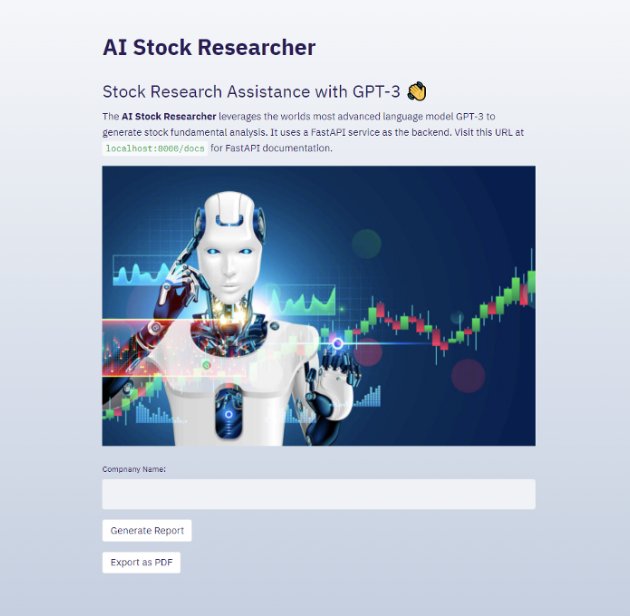20 Best Tips For Deciding On AI Stock Predicting Websites
20 Best Tips For Deciding On AI Stock Predicting Websites
Blog Article
Top 10 Tips For Evaluating The Customer Support Of Ai Platform For Predicting/Analyzing Trades
Support for customers plays an essential part in the selection of an AI trading platform. The availability of a reliable and responsive customer support service can make a big difference on resolving any issues, maximising the use of the platform, and ensuring that trading goes seamless. These are the top 10 tips for evaluating the support provided by these platforms.
1. Evaluation of the availability of support
24/7 support: Make sure that your platform is available round the clock, which is important for trading in real-time and global markets.
Business hours. If support 24 hours a day is not available, be sure to check that you are able to get support during your trading time.
Holiday coverage: Verify whether support is offered during weekends or holiday hours, or during closing of markets.
2. Test Response Times
Initial response: Contact support an initial query to see the speed at which they respond.
Resolution time: Assess the length of time required to resolve the issue, not just acknowledge them.
Live chat If it's live Make sure you test the response speed and efficiency.
3. Examine the support channels
Multi-channel support: Make sure the platform provides support via multiple channels (e.g. email, phone call live chat, email, and social media).
Verify the availability and reliability of the support channels you prefer (e.g. chat, phone).
Self-service Solutions: To resolve problems quickly, use the extensive Knowledge Base, FAQs, and Community Forums.
4. Assess the Quality of Support
Knowledge: Make sure that the support staff have a thorough understanding of the platform, trading and technical issues.
Problem-solving: Determine if agents of support can efficiently resolve complex issues or escalate them appropriately.
Professionalism Check whether support interactions were courteous, professional and efficient.
5. Make sure you are in touch with the Account Manager
Premium support: Check to see if users of higher-tier plans, or who are institutional users, have access to a specific account manager.
Verify if the account manager provides tailored assistance and proactive guidance.
Relationship-building: Determine if the manager of your account is available and try to establish a long-term relationship with users.
6. Review Support Documentation
Knowledge base: Ensure the platform has a well-organized and searchable knowledge bases with tutorials, guides, and troubleshooting suggestions.
Video tutorials See if you are able to find videos on the platform.
API documentation: Check if you're a developer to find an accurate and clear API document.
7. Review the Community Support and Peer Support
User forums: See whether the platform hosts an active user community or forum in which users can discuss solutions and tips.
Social media forums: Find unofficial groups on social media (e.g. Reddit. Facebook. LinkedIn) that discuss the platform.
Community engagement - Look to see if there is active participation by the team of the platform's employees in community forums or online discussions.
8. Evaluate Escalation Processes
Problems that escalate: Make sure there is an appropriate procedure in place to the escalation of unresolved issues to management or support levels.
Follow-up: Make sure that assistance is followed up upon resolving an issue to ensure that the issue has been solved.
Feedback loop: Determine if the platform collects user feedback in order to improve support services.
9. Test Support in Critical Situations
Market volatility: Assess the responsiveness of staff members during times of extreme market volatility.
Technical Issues: Try to simulate the issue (e.g., login issue, data discrepancy) and observe how the support staff handles the issue.
Execution of trades: Check if support can assist you with urgent trade-related issues (e.g. failed orders or execution delays).
Review User Feedback
Online reviews: Use platforms such as copyright G2 or Reddit for user reviews to assess the overall satisfaction.
Testimonials: Seek out case studies or testimonials that highlight positive experiences in support.
Visit the platform to find out how it handles complaints, negative feedback and support.
Bonus Tips
Support during the trial period Support during trial period: You can test the functionality of the platform using the demo or trial period.
Language support: See whether you are able to get help in your native language if you don't know English.
Training and Onboarding: Find out whether the platform offers training sessions or onboarding to assist new users in starting out.
You can assess customer service for AI platform for stock forecasting and analyzing by following these suggestions. By doing so you can pick a platform that provides responsive, reliable and helpful support. Good customer support can improve your overall platform experience and enable you to get the most benefit from its capabilities. Take a look at the most popular trading with ai hints for more info including incite, ai stock trading, artificial intelligence stocks, ai trading platform, ai trading, ai investment stock, best ai stocks, stock analysis app, ai stock trading bot free, ai stock market and more.
Top 10 Ways To Assess The Speed And Latency Of The Ai Technology For Predicting And Analyzing Stocks
The speed and latency of the trading platform are crucial factors to consider, especially in the case of active traders, algorithmic and high-frequency investors. Milliseconds aren't the only thing that can impact the execution of trades and even profitability. Here are the top 10 ways to measure the speed of your platform.
1. Real-Time data feeds can be used to evaluate the accuracy of your real-time data
Data delivery speed: Ensure the platform provides real-time data with a minimum delay (e.g., sub-millisecond latency).
Data source proximity: Check if the platform's servers are located close to major exchanges, which can reduce time to transmit data.
Data compression - Ensure that the platform employs effective data compression techniques to increase data delivery speed.
2. Test Trade Speed of Execution
Order processing time is the speed that your order will be processed and executed through the platform.
Direct market access (DMA). Make sure that the platform you're using offers DMA. DMA allows orders sent directly to an exchange to be processed with no intermediaries.
Execution reports. Make sure the platform provides complete execution reports. The reports should contain timestamps for order submission, confirmation, and fill.
3. Assess Platform Responsiveness
User interface (UI speed): Check how fast the system responds to inputs like clicking buttons, or loading charts.
Chart updates: Verify whether charts and visualizations are updated in real-time without lag.
Performance of mobile apps: When using a mobile app, make sure it is at the same speed as a desktop version.
4. Look for networks with low-latency infrastructure.
Server locations: Ensure the platform is using low-latency servers located near major financial hubs or exchanges.
Co-location services: Find out whether the exchange offers co-location, which allows the hosting of your trading algorithm on servers close to the exchange.
High-speed Networks: Verify the use of a fiber-optic high-speed network or other technologies that have low latency.
5. Backtesting and testing the speed of simulations.
Historical processing of data: Find out the speed at which your platform analyzes and processes historical data.
Simultaneous trade simulation: The platform should be able to simulate trading in real-time without apparent delay.
Parallel processing: Determine whether your system uses distributed computing or parallel processing to accelerate calculations.
6. Estimate API Latency
API responses: Find out how fast APIs can respond to requests (e.g. getting data from the platform, or placing orders).
Rate limits: Determine whether the API has reasonable rates to avoid delays in high-frequency trading.
WebSocket Support: Determine whether your platform is compatible with WebSocket protocols that stream data in real time and with low latency.
7. Test Platform Stability using Load
High-volume Trading: Simulate high quantities of trading scenarios in order to see if the platform is responsive and stable.
Market volatility Test the platform in times of extreme market volatility to make sure it can handle rapid price fluctuations.
Utilize the tools available on the platform to stress-test your strategies in extreme circumstances.
8. Evaluate network and connectivity
Internet speed requirement: For optimal performance, ensure that your internet connection speed is at the speed of your preferred platform.
Redundant connections: Verify if your platform has redundant internet connections. This can help you prevent interruptions.
VPN latency. If you're using VPN, VPN be sure to check whether it creates a significant amount of latency.
9. Check for Speed-Optimization Features
Pre-trade Analyses: Ensure that the platform includes pre-trade analysis to improve order processing and execution speed.
Smart order route (SOR) You can check to see if SOR is utilized by the platform in order to identify the most efficient and most cost-effective execution options.
Check the platform's tools to analyze and monitor the latency in real-time.
Review User Feedback and Benchmarks
User feedback: Use reviews of users to evaluate the platform's performance in terms of speed and latency.
Third-party benchmarks from third-party. Look for independent benchmarks or reviews that evaluate the performance of a platform against other platforms.
Case studies: See whether the platform has cases studies or testimonials that highlight the platform's low-latency capabilities.
Bonus Tips
Utilize the trial period or free demo period to test your platform’s performance and speed under real-world conditions.
Support for customer - Make sure there is support available for problems related to latency, optimization or any other issue.
Hardware needs. Check to see the platform needs specialized hardware (e.g. the latest high-performance computer) in order to run at optimal speed.
With these suggestions, it is possible to accurately assess the speed, latency and accuracy of AI software for analyzing and predicting stocks. This will enable you to select a platform that meets your needs for trading as well as reducing any possible delays. Low latency is especially crucial for high-frequency and algorithmic traders, as even minor delays can significantly impact profits. Read the best ai day trading blog for blog info including ai investing app, chart ai trading, best ai copyright, ai copyright trading, best ai trading platform, ai trading software, ai trader, ai stock predictions, stock market ai, ai stock trading app and more.